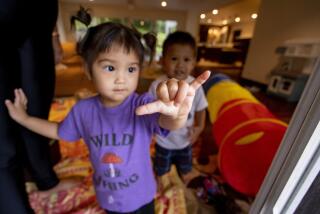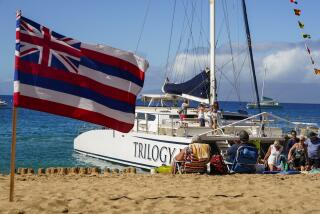Hawaii: A royal who lived a life of service
The lead article in Sunday’s Travel section is about the Hawaiian monarchs. As amazing as most of them were, one of the most influential Hawaiians of royal blood was one who never reigned, although she might have: Bernice Pauahi Bishop, known as Princess Pauahi.
She was born in 1831, the great-granddaughter of Kamehemeha I, and was schooled at the Chiefs’ Children’s School, or the Royal School, run by missionaries. It was expected she would marry Lot Kamehameha, who ultimately took the throne as Kamehameha V, but hearing that she was smitten with a young businessman named Charles Reed Bishop, Lot released her from this promise.
She and Charles Bishop, 10 years her senior, married in 1850. By all accounts, it was a love match for the ages.
Upon the death of her cousin Princess Ruth Keelikolani, Princess Pauahi inherited more than 350,000 acres of land and controlled what is said to be about 9% of all of Hawaii’s lands. The provisions of Bernice Pauahi Bishop’s will provided the foundation for the Kamehameha Schools, the amazing college prep schools for children of Hawaiian blood. Its endowment, its website says, was worth more than $9 billion in June 2011.
I was lucky enough to visit the Kamehameha Schools last month when I was on Oahu and even luckier to encounter Gussie Bento of the Kamehameha Schools Heritage Center. (The center, which contains many of the furnishings from the Bishops’ homes, is open by appointment. Info at [808] 842-8635.)
Bento is a 1950 graduate of the Kamehameha Schools, and when she saw me doing the math in my head, she volunteered her age: 80. “No way!” I said. She smiled and said, “Yes, way.”
She opened the Heritage Center a quarter-century ago and now serves as a part-time docent. On a September afternoon, she educated a group on Princess Pauahi, of whom, it was clear, she was fond.
“I was fortunate in that I had could spend a lot of time reading” about Pauahi, Bento said. “I came to know her as a real person and not as a figure who left her estate to have this school built.”
You can hear the delight in Bento’s voice in the video above as she describes the princess as a young girl. Her obvious admiration for the royal Hawaiian helped me appreciate the complexities of a princess who could have been a ruling monarch (she was asked to assume the throne after the death of Kamehameha V and declined) but clearly did much for the people she loved.
Bento (and, really, all of us there that day) marveled at how Princess Pauahi, battling her own health problems in her 50s, sailed to San Francisco by herself—remember, this was the mid 19th century--and had surgery there for what probably was breast cancer. She returned to Hawaii in June; she died Oct. 16, 1884.
In the book “The Memoirs of Hon. Bernice Pauahi Bishop,” author Mary Hannah Krout quotes from Rev. J.A. Cruzan’s funeral sermon honoring the princess: “The last and best of the Kamehamehas lies in her last long sleep...Refusing a crown, she lived that which she was—crowned. Refusing to rule her people, she did what was better: She served them and in no way so grandly as by her example. And her death brings home the truth uttered years ago by Dr. Howe: ‘The world can do without its masters better than it can do without its servants.’”
The Bishop Museum opened in 1889, founded by Charles Reed Bishop in honor of his late wife. It contains millions of priceless pieces, some belonging to Pauahi, some from the days of the kingdom, some of the cultures that populate Hawaii. The Kamehameha School for Boys was opened in 1887 on the grounds of the Bishop. The School for Girls opened in 1894 on a campus nearby. They eventually relocated. There are also Kamehameha preschools and campuses on Maui and Hawaii.
The end of the life of the woman who could have been queen was the start of a legacy that has continued to allow her to serve her people.
More to Read
Sign up for The Wild
We’ll help you find the best places to hike, bike and run, as well as the perfect silent spots for meditation and yoga.
You may occasionally receive promotional content from the Los Angeles Times.






